Mexico City is one of the very few cities in the world where you can see ancient pyramids and Porfirian-era manors in neighboring areas. Just as it’s easy to find some of the finest examples of pre-Hispanic ruins, the capital is also home to some of the most avant-garde proposals in contemporary architecture. Some very odd buildings, too.
Most of us are surely aware of Conjunto Calakmul — locally dubbed “La Lavadora” — in Santa Fe, thanks to its unique washing-machine-like façade. However, beyond the corporate side of town, people have taken their architectural licenses seriously and adjusted their homes and office spaces to fit their needs. Often, in very strange ways. From medieval-ish estates to office buildings that seem to levitate, here is our digest of the most bizarre buildings in Mexico City.
Castillo Rébsamen (Narvarte, Benito Juárez)
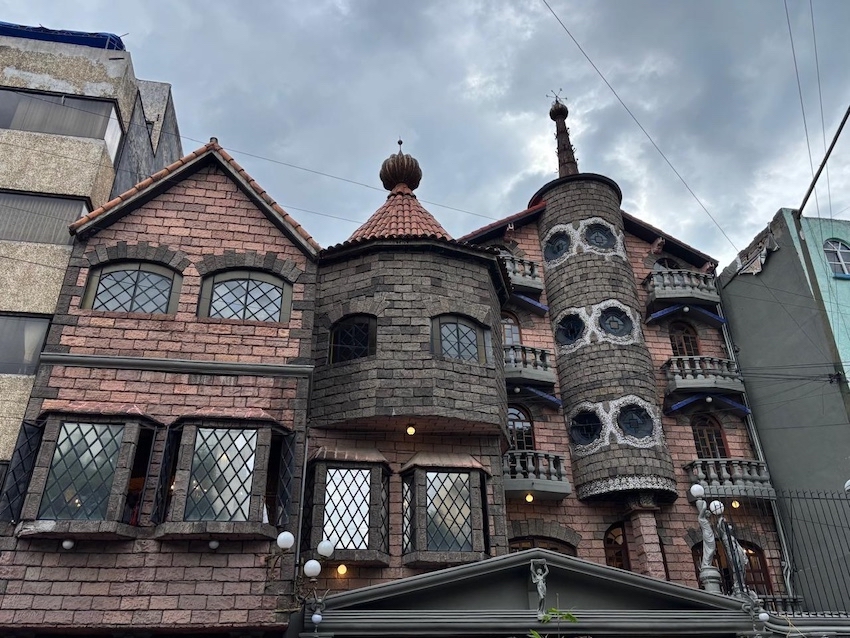
This is one of those buildings in Mexico City that no one knows how it came to be there. Narvarte residents like to think it just appeared there, almost at the same time as their neighborhood was founded. There’s no record of an architect or exact construction date. However, it is an icon of the bizarre architecture of the Benito Juárez borough. Thought to have been a residential medieval-like (kind of?) manor in the 40s, this enormous property is now a venue for weekend kitsch bazaars since 2022. Certainly, it’s a sight to be seen when having a stroll around the area.
- Where? Enrique Rébsamen 205, Narvarte Poniente, Benito Juárez.
Casa de las Brujas (Roma Norte, Cuauhtémoc)
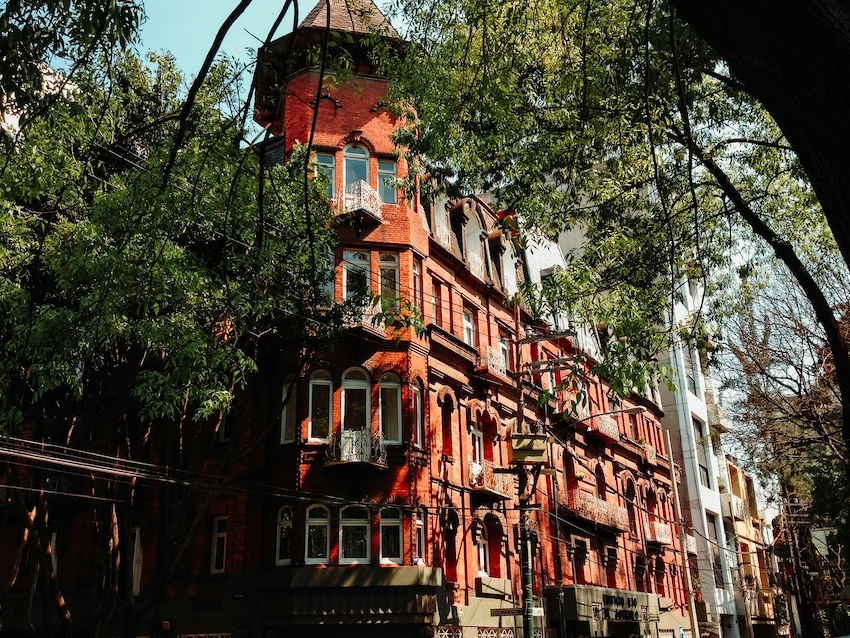
Edificio Río de Janeiro was built under the direct orders of former president Porfirio Díaz. Often referred to as “Edificio de las Brujas,” this 1908 construction was his way of celebrating the Centennial of the Mexican Independence Movement. This edgy apartment building in the heart of vibrant Roma Norte appears to be crowned by a witch’s hat on its main tower. Despite its Gothic-architecture-inspired façade, “Casa de las Brujas” has an impressive Art Déco interior design, in addition to long halls and double-height rooms. I often think of it as the child of a New York City apartment building and a summer palace in the French province.
- Where? Plaza Río de Janeiro 56, Roma Norte, Cuauhtémoc.
Pyramid Center (Portales Norte, Benito Juárez)
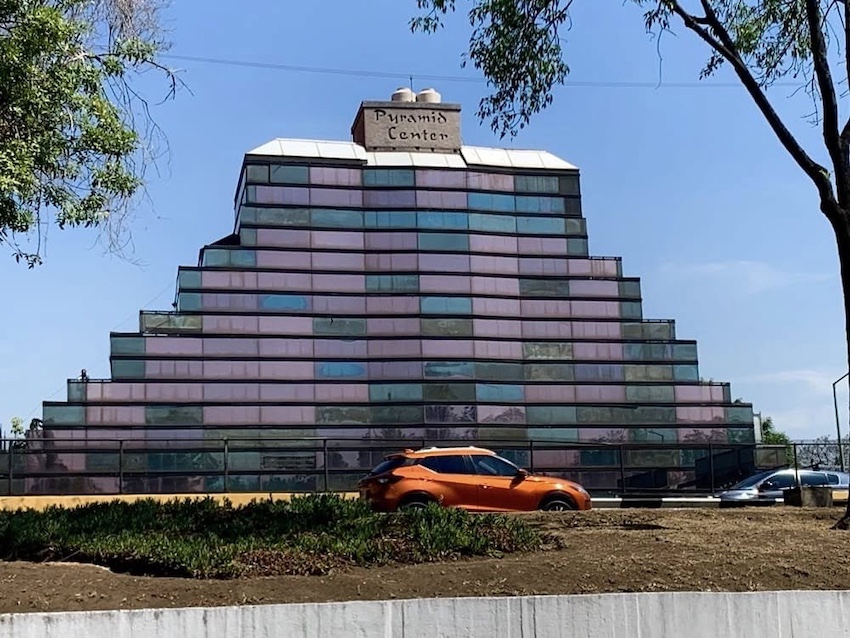
Being the fairest of them all is way too mainstream in Mexico City. Need proof? Look no further than the Pyramid Center in the Benito Juárez borough. Listed among “the ugliest,” per Excélsior newspaper, this is one of the stars among the most bizarre buildings in Mexico City. The Pyramid Center is easily identified by its horrendous façade, designed and built by Mexican architect Ibáñez Gill in the 80s. The seven-story building has its name at the top, too. Plus a coating of iridescent glass in blue, lilac and dark blue. Literally, you can’t miss it! Poor thing, it sure is very ugly.
- Where? Avenida Río Churubusco 91B, Portales Norte, Benito Juárez.
Casa de Casas (Granada, Miguel Hidalgo)
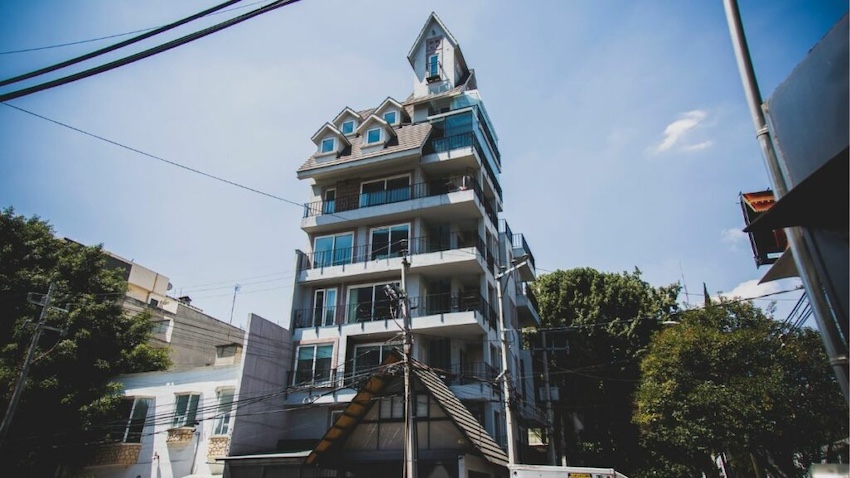
Just in front of the Cervecería Modelo factory, this apartment building consistently catches the eye of passersby in the Granada neighborhood, near Polanco. In October of 2022, Chilango magazine accurately named it “Casa de Casas.” Why? “Because on the roof you can see what looks like small houses.” And yes! Every little window on the roof has its own roof. Plus, a tiny house was built on top of it all. As with Castillo Rébsamen, there is no record of this building’s architect or designer. But Polanco-goers and dwellers alike cherish it. It has a curiosity that brings a smile to their faces as they drive by Calle Lago Onega and Avenida Río San Joaquín.
- Where? Lago Onega 405, Granada, Miguel Hidalgo.
Edificio Celanese (Campestre, Álvaro Obregón)
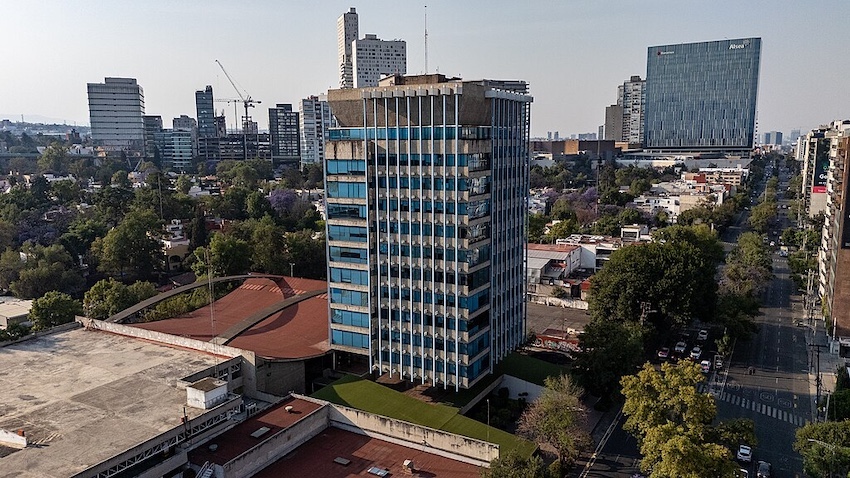
Designed by Mexican architect Ricardo Legorreta and engineered by Leonardo Zeevaert in 1968, Edificio Celanese’s peculiar shape makes it appear like it’s levitating. Naturally, that’s not the case. It has a central pillar of reinforced concrete and steel at its base from which the rest of the structure is detached, giving it a suspended appearance. This design serves a purpose, too. It’s built to mitigate the earthquakes that frequently hit Mexico City.
- Where? Av. Revolución 1425, Campestre, Álvaro Obregón.
Andrea Fischer contributes to the features desk at Mexico News Daily. She has edited and written for National Geographic en Español and Muy Interesante México, and continues to be an advocate for anything that screams science. Or yoga. Or both.
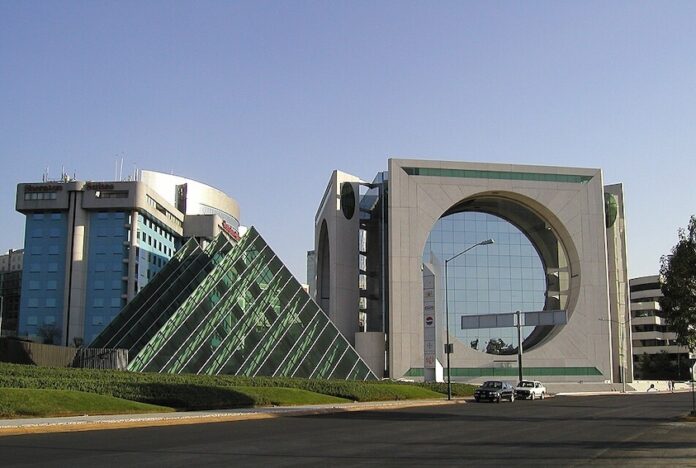
This is a great article. If you enjoyed it, Google the following:
Gold Pyramid in Wadsworth, Illinois
North of Chicago, in a tiny suburb, someone built n Egyptian-like pyramid as a family home. There is even a statue of the Pharaoh Ramases the Great in front
Like this article, who knows why?
It’s got nothing on the Bass Pro Shop in Memphis though!
That bass pro shop is really interesting for sure.
The Gold Pyramid in Wadsworth, Illinois, is possibly the greatest finding I’ve had in the year. Thanks for sharing, Bradford 😂😂
“El Dorito” and “El Pantalón” are two of my favorites
Those are some of the greatest examples of Mexico City’s odd architecture, for sure! 😂
M.C Escher was born in Leeuwarden and was a Dutchman and not a German!
This is a mistake like the one in another article where it was said that Groningen was a town in Norway instead of The Netherlands. Please make sure the next time you get your facts right.
Correcting errors is good. Adding “next time … get your facts right” is unnecessary and obnoxious.
No….it’s just her Nature. Remember, she’s a Paramour….it’s all she can do to roll off the day-couch, drain the cat’s boil, and reem the crack-pipe…..Saludos desde Acapulco!
Much more interesting than the celebrity article preceding this one.
Thanks for reading and commenting, Eduardo! Happy to write about my hometown’s odd architecture 😂